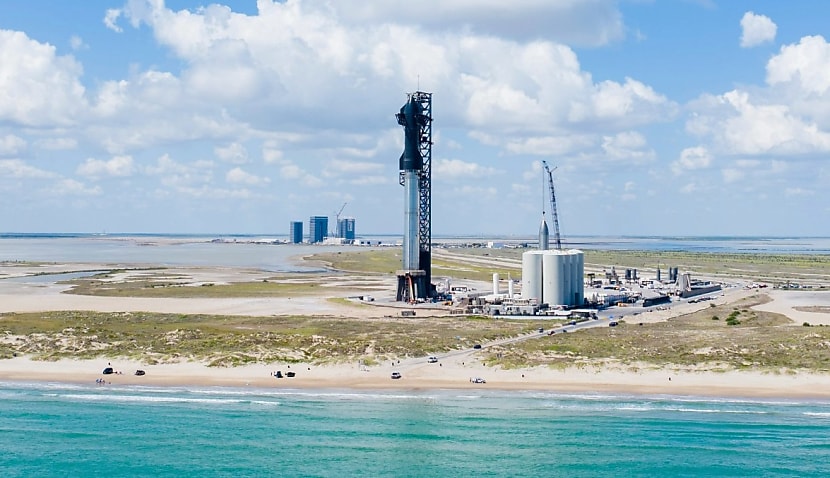
The SpaceX founder said his team “continues to work with the FAA on a launch licence”, with speculation a second blast off could happen as soon as this month.
Starship is the collective name for both the SpaceX Super Heavy booster rocket and Starship spacecraft destined to one day fly humans to Mars.
Its first launch in April failed to reach orbit but surpassed expectations by crucially passing through Max Q, the period in which the spacecraft endures maximum dynamic pressure.
The FAA has already concluded a technical investigation into the failed launch, and ruled SpaceX would need to implement dozens of corrective measures.
Some of the actions include making hardware changes to prevent leaks and reinforcing the rocket’s launchpad.
However, the FAA said the closure of the mishap investigation “does not signal an immediate resumption of Starship launches”.
The stacking of the launch vehicle on the launchpad comes after a crucial “full duration” test fire in August was a success, paving the way for a launch in weeks.
The practice fire lasted about five to six seconds and saw all 33 engines successfully ignite.
When it finally takes off, the second launch will differ from the first because SpaceX has switched to a “hot staging” separation that will see its upper stage engines ignite while still attached to the enormous Super Heavy booster.
The new approach to separation – standard on Russian launch vehicles – will see most of the 33 Raptor engines on the lower Super Heavy booster turned off when the upper stage ignites.
SpaceX founder Elon Musk told Bloomberg he believes hot staging would avoid the loss of thrust during separation. However, the change will involve modifications to the Super Heavy booster, including an extension to the top of the booster that is mostly venting.
He added there would be “well over a thousand” other small changes to the launch process, including an upgrade of the launch pad to avoid damage.
Starship’s first launch failed when a few of its Super Heavy rocket’s Raptor engines burnt out and the booster didn’t correctly separate from the spacecraft. It meant the two vehicles, still attached, entered a death spiral.
Other problems with the blast-off saw damage to the concrete launch pad at Boca Chica, with debris reportedly thrown as far as the town of Port Isabel 10 kilometres away.
In a Twitter Spaces post-mortem, the SpaceX founder said the launch had “slightly exceeded” expectations and downplayed the risks from the debris cloud.
“The debris is really just basically sand and rock, so it’s not toxic at all or anything. It’s just like a sandstorm, essentially – basically a human-made sandstorm. But we don’t want to do that again,” said Musk.
The launch beat NASA’s record of the world’s most powerful rocket to go into operation as it reached an altitude of 39 kilometres over the Gulf of Mexico.
“With a test like this, the success comes from what we learn, and today’s test will help us improve Starship’s reliability as SpaceX seeks to make life multi-planetary,” said SpaceX.

Adam Thorn
Adam is a journalist who has worked for more than 40 prestigious media brands in the UK and Australia. Since 2005, his varied career has included stints as a reporter, copy editor, feature writer and editor for publications as diverse as Fleet Street newspaper The Sunday Times, fashion bible Jones, media and marketing website Mumbrella as well as lifestyle magazines such as GQ, Woman’s Weekly, Men’s Health and Loaded. He joined Momentum Media in early 2020 and currently writes for Australian Aviation and World of Aviation.
Receive the latest developments and updates on Australia’s space industry direct to your inbox. Subscribe today to Space Connect here.









